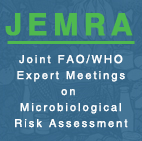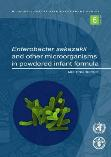 |
Risk Assessment for Cronobacter sakazakii in Powdered Infant Formula |

 |
|
|
|
|
|
|
|
Cronobacter sakazakii (previously Enterobacter sakazakii) is a gram-negative, non-spore-forming bacterium belonging to the Enterobacteriaceae family. On occasion, it has been associated with sporadic cases or small outbreaks of sepsis, meningitis, cerebritis and necrotizing enterocolitis.
The risk assessment presented here addresses powdered infant formula (PIF) that is intrinsically contaminated with C. sakazakii. This risk assessment considers the preparation, storage and feeding of PIF to infants. The model describes the effect that each of the preparation and storage stages has upon the intrinsic microbiological quality of the PIF in terms of C. sakazakii.
|
The risk assessment explicitly examines the impact of different preparation and handling strategies on C. sakazakii in PIF and describes the outputs in terms of the relative risk posed to infants. In addition to explicitly considering the preparation and handling of PIF we provide tools to explore the possible impact of microbiological criteria through the specification of sampling plans for C. sakazakii in PIF. The microbiological criteria can be explored in isolation or in combination with the preparation and handling tools to determine the impacts upon risk.
The risk assessment model presented here was presented and reviewed at a Technical Meeting convened by FAO/WHO. The full report of the meeting is
available. |
|
 |
Note that the risks associated with the potential contamination of the powder from environmental sources after retail, for example in the environment in which the formula is prepared or the equipment used in preparation (e.g. blenders), are not considered in this assessment.
|
|
|
|
|
|
|
|
|
|